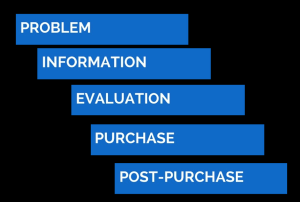 Getting your content to resonate with your audience depends to a large extent on the customer experience, in other words their journey to making a purchase. Prospects in the early stages of research have different needs than those that are closer to making a decision. Creating content that gets noticed isn't just about finding the right keywords. Although some content marketers place a significant amount of emphasis on the search for high-volume keywords, that approach is short-sighted.
Getting your content to resonate with your audience depends to a large extent on the customer experience, in other words their journey to making a purchase. Prospects in the early stages of research have different needs than those that are closer to making a decision. Creating content that gets noticed isn't just about finding the right keywords. Although some content marketers place a significant amount of emphasis on the search for high-volume keywords, that approach is short-sighted.
Top-of-the-funnel generic keywords are bound to have greater search volume than those used for specific situations. For example, there will be more searches for "productivity widgets" than "productivity widget integration ISO 9000." Yet, there may be a strategic reason for creating more content that addresses the needs of those lower volume searches. More on that in a moment.
Despite all the "fancy" customer experience stuff out there, people always have and always will follow five basic steps; problem resolution, information gathering, solution evaluation, purchase, post-purchase behavior. The names may have changed, but the song remains the same. Whether it's B2B or B2C, people experience problems, look for solutions, figure out their best alternative, buy what they believe is the right choice, and engage in some sort of post-purchase interaction.
Stop chasing keywords and align your content with the customer experience. Google handles trillions of searches per year and a good portion them are unique. If you can't guess those keywords or their search volume, it's tough to execute a keyword-oriented content strategy efficiently. However, if you are empathetic to your customer and their experience, creating content that meets their needs is far easier.
Let's borrow a concept from the world of growth hackers and startups. People that work in this milieu, typically creators of web applications, are primarily focused on creating the ultimate experience for their customers. It's what they call product/market fit. This customer-orientation helps products become viral simply because they are so immensely useful.
Can marketers take the same approach with their content? I think so. In a similar fashion, it means creating content that is remarkably helpful to some, but not necessarily to all. For example, content that helps customers with specific product issues will most likely be useful to fewer people than content created for prospects at the information gathering stage. That's okay.
This is the type of content that can turn passive customers into raving fans. Don't forget; these enthusiasts can generate far more positive word-of-mouth than any other marketing effort. This type of virality is worth its weight in gold, bringing with it tangible results unlike vanity metrics such as views and shares. Let's be honest, a lot of people don't read what they share.
So how do you go about creating this type of content? Forget about keywords and focus on the customer. Startups call this "customer discovery" even if they are not customers at this point. It means getting outside and having real-world conversations with clients and prospects, discovering their issues, where they are in the buying process and figuring out how your content can help. Along the way, you'll learn the terminology your prospects use to describe their situation and challenges. That familiarity can be useful in creating some very compelling copy.
